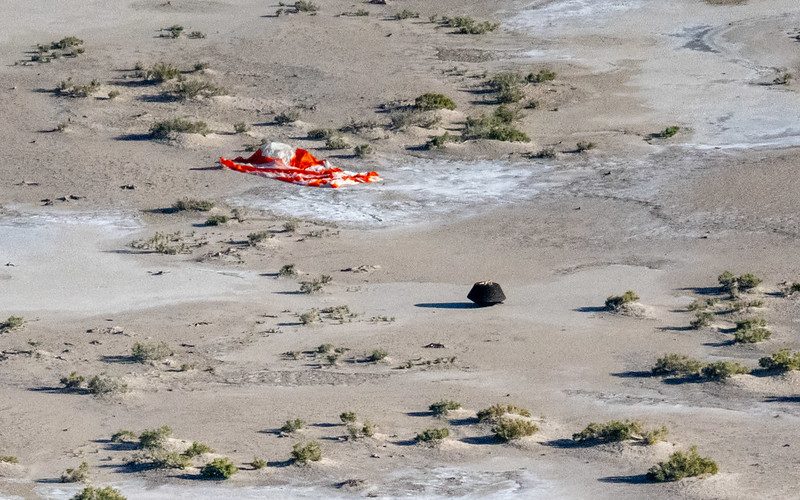Scientists at the University of Manchester (UoM) will be among the first to study material retrieved from an asteroid by Nasa.
Nasa’s billion-dollar OSIRIS-REx mission delivered a capsule containing a sample of asteroid Bennu on Sunday.
It was released 63,000 miles above the earth’s surface – about one-third of the distance between Earth and the Moon – landing safely by parachute in the Utah desert just before 9am.
UoM’s Department of Earth and Environmental Sciences (DEES) will join a handful of teams from around the world studying the asteroid. It is hoped the unique sample will help scientists better understand the origin of the solar system, and perhaps even the origin of life on Earth.
Asteroid Bennu is rich in carbon, which is a key element for the ‘building blocks of life’: organic molecules. Such molecules have been found in previous samples of meteorites and comets, suggesting that at least some of the components essential to life can occur naturally in space.
DEES’s Dr Sarah Crowther said: “A lot of our research focuses on meteorites, and we can learn a lot about the history of the Solar System from them.
“But meteorites get hot coming through Earth’s atmosphere and can sit on Earth for many years before they are found, so the local environment and weather can alter or even erase important information about their composition and history.
“Sample return missions like OSIRIS-REx are vitally important because the returned samples are pristine, we know exactly which asteroid they come from and can be certain that they are never exposed to the atmosphere.”
The delivery of the sample concludes a seven-year mission for Nasa, which launched the spacecraft in September 2016. The craft took over two years to reach Bennu, entering the asteroid’s orbit on New Year’s Eve 2018.
It then spent nearly two years mapping the surface of the asteroid, before landing and retrieving a sample in October of 2020.
Nasa administrator Bill Nelson said: “This mission has brought something extraordinary – the largest asteroid sample ever received on Earth.
“It’s going to help scientists investigate planet formation, it’s going to improve our understanding of the asteroids that could possibly impact the earth and it will deepen our understanding of the origin of our solar system and its formation.
“These missions prove once again that NASA does big things. Things that inspire us and unite us. Things that show nothing is beyond our reach when we work together.”
Twenty minutes after releasing the sample, OSIRIS-Rex embarked on its next mission: to explore Apophis: an asteroid due to pass within 20,000 miles of the Earth in 2029.
Photo credit: NASA/Keegan Barber




